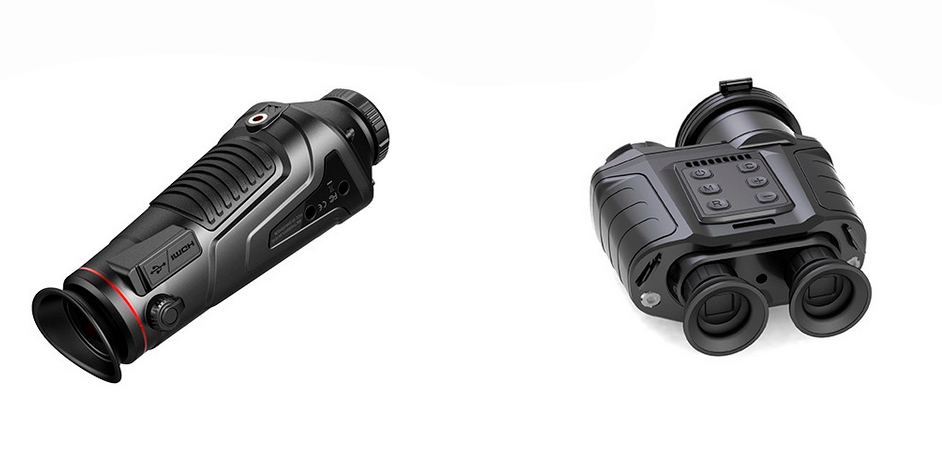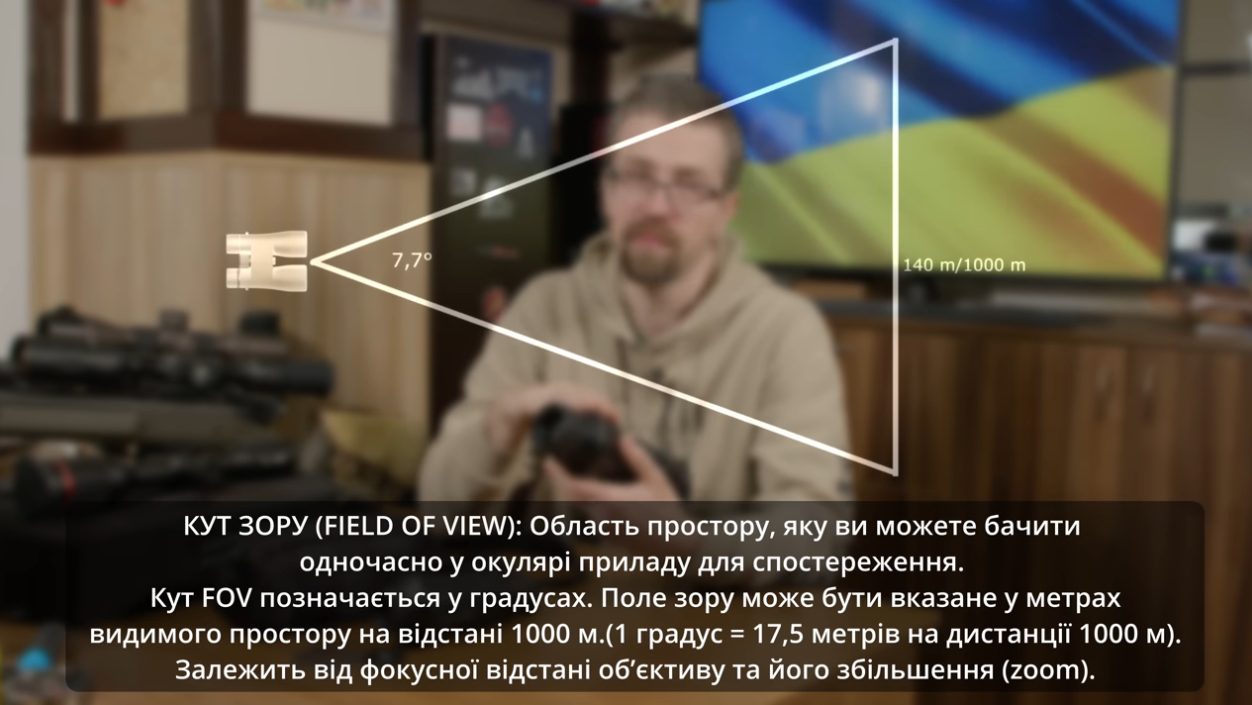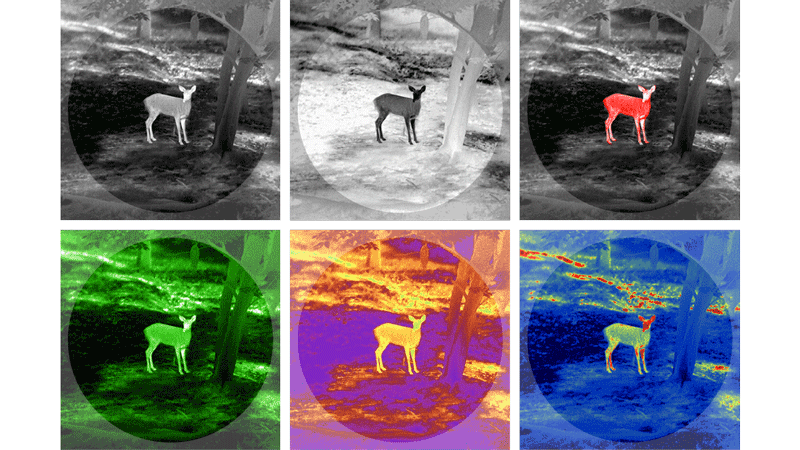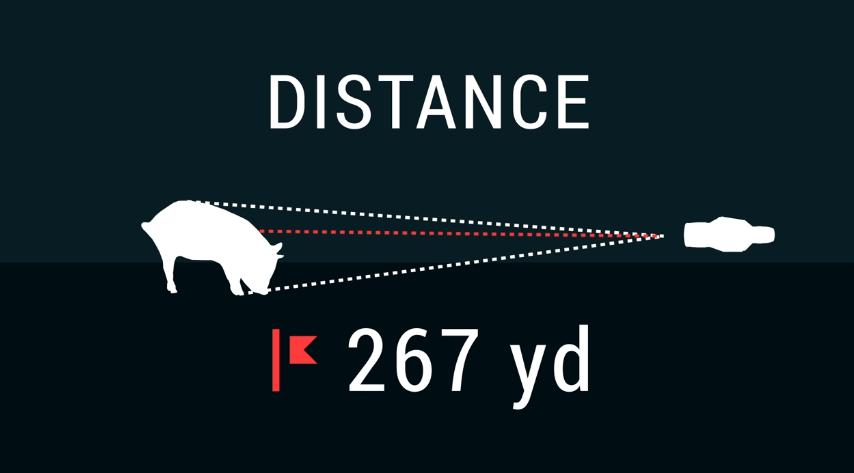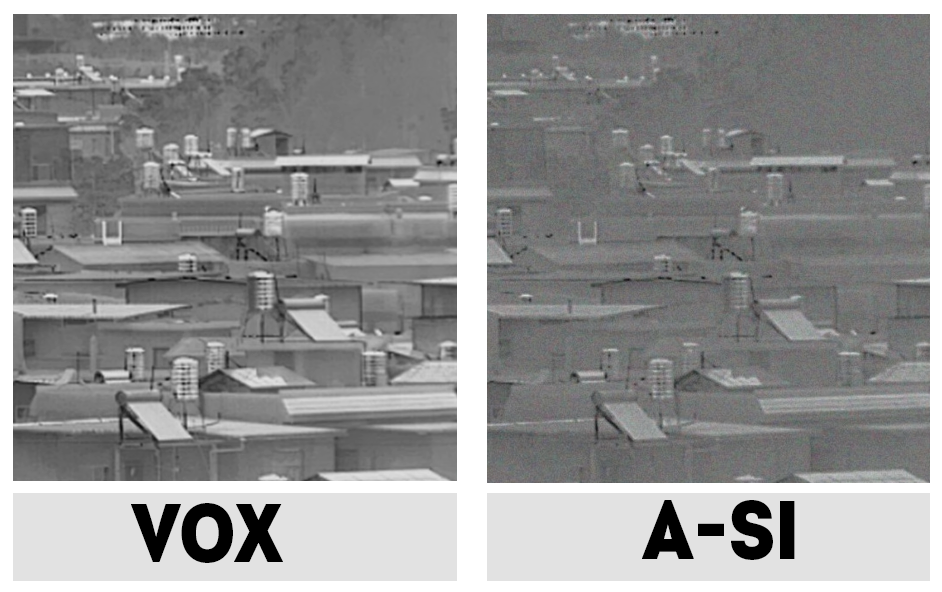How to Choose a Thermal Imaging Monocular / Binocular
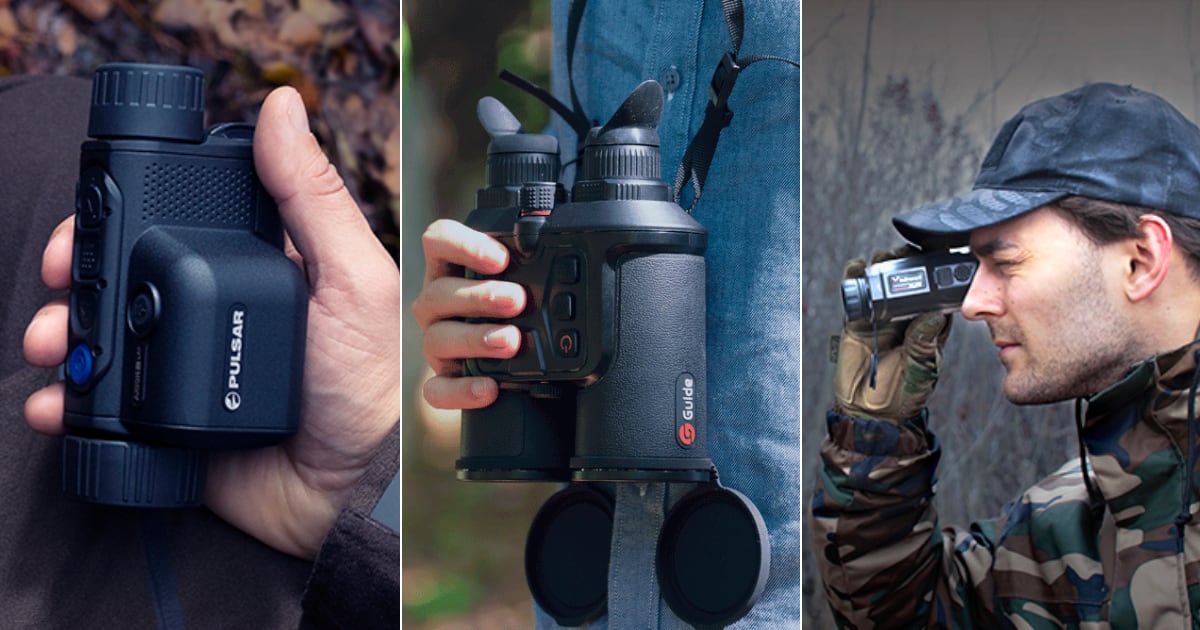
We have analyzed thermal imaging cameras and their differences, clarified what you should pay special attention to when choosing a camera and selected the best models, dividing them into 3 price categories: up to $1500, from $2000 to $2500 and from $2600 and more.
The Best Thermal Imaging Camera Under $1500
This category includes the simplest models with a basic set of features and minimal marginal characteristics. As a rule, they were designed for hunting, but they can be useful in war situations as well. That is, the capabilities of all these thermal imaging cameras will be sufficient if we are not talking about some special conditions (for example, for special forces), but they are more likely to require specific devices.
IRay Eye Series V2.0 E3w - Basic Model with Integrated Picture-in-Picture

The Eye series is the basic model without any additional features. With it you will be able to find targets at a distance of more than 600 meters. For this price point, a feature of the monocular is the built-in picture-in-picture mode. This helps users zoom in on targets while leaving the rest of the field of view visible. It is also fully protected against dust, sea waves or strong water jets. Water getting inside the case should not disrupt the operation of the device. Also, do not count on the HD display, its resolution is 720x540.
Sensor resolution: 384 x 288
Thermal image sensor refresh rate: 50 Hz
Viewing angle: 19.5º x 14.7º
Claimed Battery life: 7 hours
Weight: 320 grams
Memory: Built-in 16GB
Sensor: VOx
Degree of protection: IP66
Price: $1300-1400
Read more at Manufacturer's page
Guide TD420 - HD Display with Minimal Price

The main advantage of the TD420 is the display. The 1280×960 resolution LCOS display has enhanced color reproduction for comfortable viewing. The laser rangefinder allows you to see a target up to 200 meters away. This feature allows you to find the target in the absence of any light source. The maximum range of this thermal imager is about 600 meters. When connected to Wi-Fi, you can immediately share the coordinates of the target and its thermal image. The thermal imaging camera is suitable for all weather conditions. It is protected against heavy rain, dust, shock and will survive a 1 meter drop.
Matrix resolution: 400 x 300
Thermal image sensor refresh rate: 50 Hz
Viewing angle: 10.4º x 7.9º
Claimed Battery life: 7 Hours
Weight: 350 grams
Memory: Built-in 16GB
Sensor: VOx
Degree of protection: IP66
Price: $1400
Read more at Manufacturer's page
MiLESEEY Thermal Monocular T-Recon Tactical
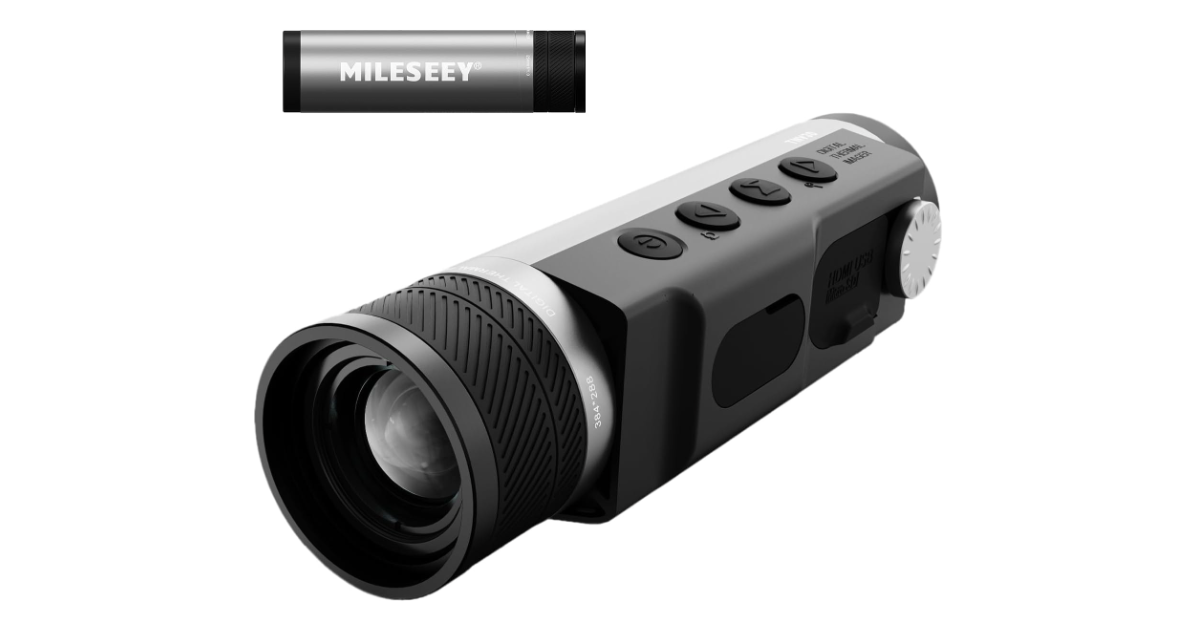
The MiLESEEY T-Recon Tactical thermal imaging monocular has a 384×288 infrared resolution combined with a 25mm f/1.0 germanium lens. The easy-to-use focus ring allows you to easily focus on your subject, regardless of distance. Hot Tracking is a game changer. The ability to instantly lock onto the warmest heat source in dense vegetation.
The device boasts an impressive 1300 yard detection range combined with 8x digital zoom and an 800*600 OLED display. With a 4500 mAh lithium battery, the T-Recon is extremely durable. Offering up to 15 hours of continuous use.
Matrix resolution: 384 х 288
Thermal image sensor refresh rate: 50 Hz
Viewing Angle: 14.9°*11.2°
Claimed Battery life: 15 hours and longer
Weight: 0.6 Kilograms
Memory: Built-in 16GB
Degree of protection: IP65
Price: $1700
The Best Thermal Imaging Camera Under $2500
This price range allows you to choose a more powerful thermal imager model with additional features such as long battery life, recording large amounts of video or extra features like the laser rangefinder.
Guide TK431 - Laser Rangefinder for Working in Complete Darkness
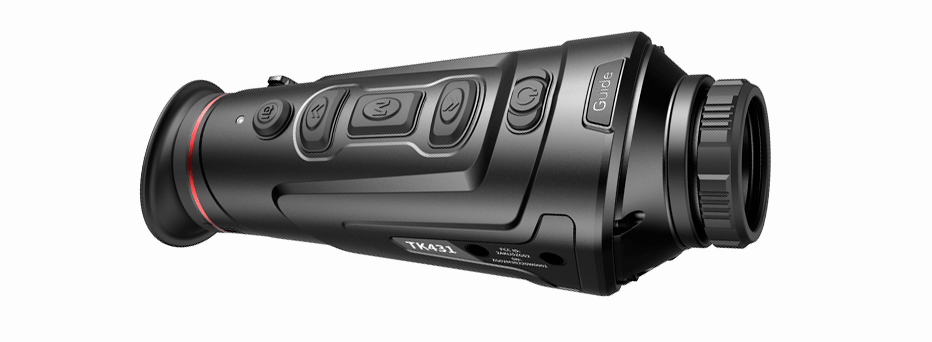
The model is equipped with an HD display with a resolution of 1280 x 960 pixels. Built-in laser rangefinder to see targets up to 200 meters away in total darkness, illuminator and housing to withstand a 1-meter drop and protection from dust and rain. The LCOS eyepiece prevents condensation or fogging, which helps maintain a clear view of the object. And a picture-in-picture mode that allows you to capture an object for observation.
Matrix resolution: 400 x 300
Thermal imaging sensor refresh rate: 50 Hz
Viewing angle: 11.1º x 8.3º
Claimed Battery life: 5 hours and longer
Weight: 485 grams
Memory: Built-in 16GB
Sensor: VOx
Degree of protection: IP66
Price: $2400
Read more at Manufacturer's page
ATN OTS 4T 384 4.5-18X - 16 Hours of Battery Life

One of the main features of this model is the smart rangefinder. With this monocular you can quickly estimate the distance to the target. The thermal imager is also suitable for those who want to record their observations on video, recording at 30 or 60 frames per second with the built-in microphone. It supports microSD cards up to 64 gigabytes. And when connected to the network, you can broadcast live in 720p format. Not least, the thermal imager has a battery life of 16 hours. However, it should be noted that this monocular is the heaviest in this selection and weighs 875 grams.
Matrix resolution: 384 x 288
Thermal image sensor refresh rate: 60 Hz
Angle of view: 6.0º x 4.7º
Claimed Battery life: 16 Hours
Weight: 875 grams
Memory: Supports microSD cards from 4 to 64 gigabytes. No built-in memory
Sensor: VOx
Degree of protection: IP66
Price: $2500
Read more at Manufacturer's page
Guide TrackIR PRO 35mm - Enhanced Clarity Through a Higher Resolution Sensor

TrackIR has a 640 x 480 sensor and a 1280 x 960 HD display that generates images at a frame rate of 50 Hz for a smooth overview. The thermal imager is also equipped with a rangefinder that shows distance information with high accuracy. A digital zoom and picture-in-picture mode will lock onto the target for further observation. It is also protected against dust, rain and snow and can survive a 1 meter drop. This makes this thermal monocular one of the best in the Guide family.
Matrix resolution: 640 x 480
Thermal image sensor refresh rate: 50 Hz
Viewing Angle: 12.5º x 9.4º
Claimed Battery life: 5 hours and longer
Weight: 485 grams
Memory: Built-in 16GB
Sensor: VOx
Degree of protection: IP66
Price: $2400
Read more at Manufacturer's page
Choosing a Thermal Imaging Camera for a Price over $2500
This category of thermal imaging cameras allows you to get the most out of what modern thermal imaging systems are capable of, but you need to be deliberate when buying them because for many users these features will be unnecessary and impractical.
The Pulsar Helion XQ50F - The Volunteers' Choice
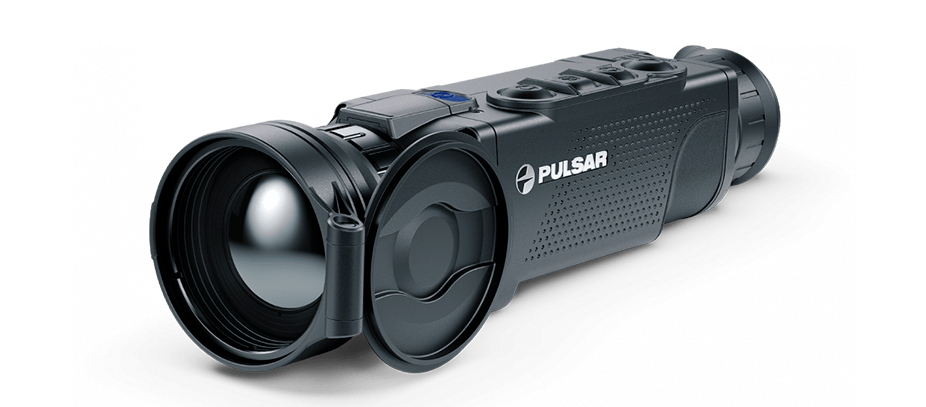
The thermal imager operates at a frequency of 50 Hz, which makes movements in the frame smooth even in the most active scenes. The monocular allows you to find a target at a distance of up to 1800 meters. The AMOLED display allows it to work in all weather conditions: rain, snow and can even withstand immersion in water to a depth of 1 meter for a short time. In terms of protection, this monocular is the leader in our selection. It can also withstand temperatures from minus 25 to plus 50 degrees. And the built-in Wi-Fi module allows you to immediately send recorded photos and videos to your smartphone or PC. The possibility of live streaming is available. According to the Militar Portal this model is one of the most popular volunteer thermal imaging cameras.
Matrix resolution: 384 x 288
Thermal image sensor refresh rate: 50 Hz
Angle of view: 7.5º x 5.6º
Claimed Battery life: 8 hours
Weight: 550 grams
Memory: Built-in 8 GB
Sensor: VOx
Degree of protection: IP67
Price: $2800-3000
Read more at Manufacturer's page
IRay Eye 2 E6 PRO V3.0 - For Detection of Targets At Up To 2.5 km Range

Right away we want to emphasize the range of target detection. This model can detect up to 2,500 meters, which is the highest value in this range of thermal imaging cameras. Even with a low temperature contrast, the thermal imaging camera will provide a detailed image. IRay has its own proprietary Ultra-clear mode technology that increases clarity in adverse weather conditions such as rain, snow and fog. The monocular has 32GB of internal memory for storing photos and recording videos as well as a Wi-Fi module that allows you to connect 4 devices simultaneously and the ability to monitor in picture-in-picture mode.
Matrix resolution: 640 x 480
Update rate of thermal imaging sensor: 50 Hz
Viewing angle: 8.8º x 7.0º
Claimed Battery life: 6 hours
Weight: 500 grams
Memory: Built-in 32 GB
Sensor: VOx
Degree of protection: IP66
Price: $3800-3900
Read more at Manufacturer's page
Leica Calonox Sight - For Use With a Scope
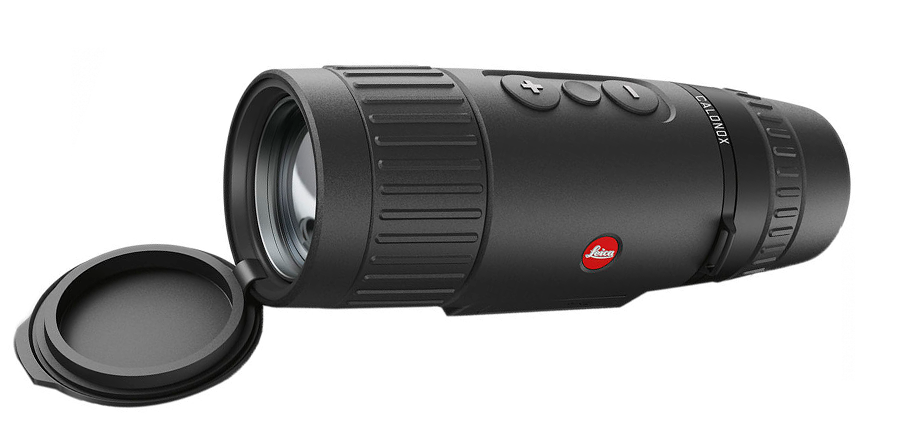
Combined thermal imaging camera that can be used separately or mounted on the objective lens as an attachment with a special adapter. Since the model is suitable for use with telescopic sights, the maximum magnification is 1x. The proprietary LIO (Leica Image Optimization) image processing improves the image with special algorithms, resulting in particularly detailed color gradation, excellent contrast and high detail resolution. Target detection with a thermal imaging camera is possible at distances of up to 2,000 meters. This is combined with a powerful OLED display with a resolution of 1024 x 768 pixels and 11 hours of battery life.
Matrix resolution: 384 x 288
Thermal image sensor refresh rate: 50 Hz.
Viewing angle: 8.9º x 6.7º
Claimed Battery life: 11 hours
Weight: 685 grams
Memory: Built-in 32 GB
Sensor: VOx
Degree of protection: IP66
Price: $4000-5100
Read more at Manufacturer's page
Binocular GUIDE TN650 - All In One
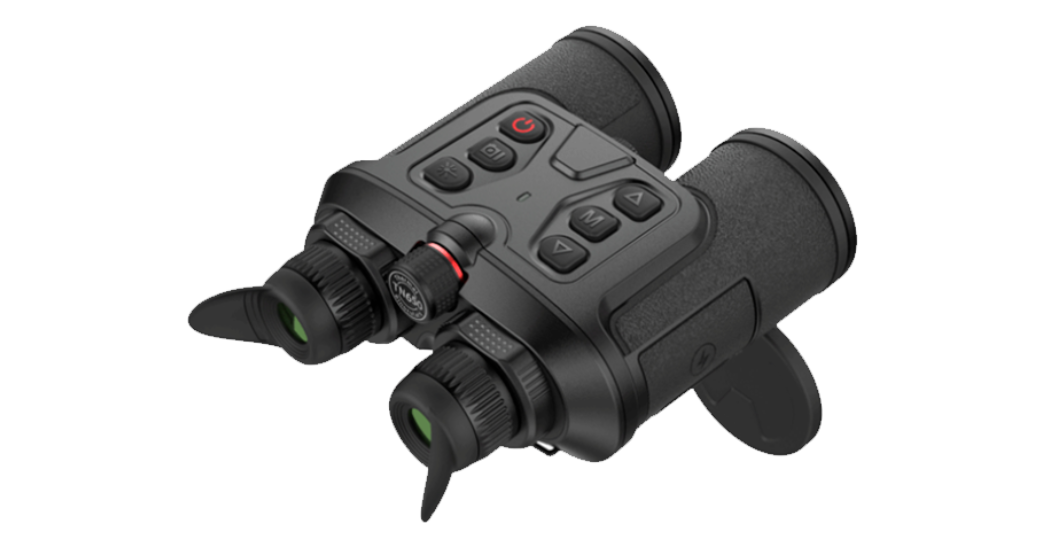
The thermal imaging binocular looks like a binocular on the outside, but inside it has one lens and two digital screens, which greatly reduces the feeling of fatigue from long-term observation. It has a VOx sensor and an OLED display with a high resolution of 1024×768 pixels. The refresh rate of the image is 50 Hz. The detection range reaches 2000 meters. Model has all modern features: video and photo recording, Wi-Fi module, picture-in-picture mode, laser rangefinder, GPS, compass, gyroscope and rugged housing that can withstand a fall from a height of 1 meter.
Matrix resolution: 640 x 480
Thermal image sensor refresh rate: 50 Hz
Viewing angle: 8.78º x 6.59º
Claimed Battery life: 5 hours and longer
Weight: 685 grams
Memory: Built-in 32 GB
Sensor: VOx
Degree of protection: IP66
Price: $6000-7000
Read more at Manufacturer's page
What is a Thermal Imager?
A thermal imaging camera is a digital optical device that shows as a heat map the radiation from buildings or creatures that the human eye cannot see. Thermal imaging cameras are equipped with a lens, an infrared-sensitive sensor and a display to which the image from the sensor is transmitted. They transmit only the infrared spectrum and block out visible light. Used for medium and long range surveillance (600 meters to 1.5 kilometers). The army uses it to detect enemies and their equipment in low light, through fog, smoke, dust, and other visibility-blocking factors. Even the total absence of light allows the thermal imaging camera to clearly detect a person, which was demonstrated by the AFU in March 2022.
The AFU can clearly see the occupants thanks to the thermal imaging camera, which allows for aimed fire. Video posted on March 24, 2022.
Types of Thermal Imaging Cameras
Thermal imagers differ in design: there are monoculars and binoculars.
Monoculars
The first are more popular and affordable. The device can have a detection distance from 90 meters to 1.2 km and more. The advantage of a monocular is its weight (280-500 grams), compactness, volume and the ability to use one hand.
Binoculars
Binoculars are designed for long-range object detection and long-term observation. The advantage over the monocular is the detection distance, with binoculars the target is detected at a distance of 2 kilometers or more. Battery life: some models can work up to 16 hours, while the monocular is enough for 6 hours. The disadvantages are weight (600 grams to 1 kilogram or more) and price: you can buy one binoculars or 2 - 3 monoculars for the same price.
In terms of general characteristics each thermal imager has: thermal matrix resolution, detection distance and angle of view, refresh rate, lens focal length and sensor technology: a-Si and VOx.
Who Produces Thermal Imaging Cameras?
The leading countries for thermal imaging cameras are the United States and China. The leading Chinese manufacturers are Guide Sensmart, iRay and HikMicro. In the United States, they are Pulsar, AGM and ATN. In Europe, the most famous manufacturer is the Italian Konus Optical.
In Ukraine, the company Thermal Vision Technologies under the brand name ARCHER is responsible for the production of thermal imagers. Since 2016, they had a contract with the Department of Armament of the MOD. But it is worth noting that after 2021 there is no exact data on the volume of purchases of ARCHER thermal imagers by the Ministry of Defense of Ukraine. Also, the prices of the Ukrainian manufacturer are much higher than those of competitors from China or the USA.
It is also worth mentioning those who produce matrices for thermal imaging cameras. The leading companies for the supply of matrices are the American FLIR Systems, the French LYNRED and the Israeli Elbit Systems.
Which Thermal Imaging Camera Is for Military Use?
Thermal imagers have a wide range of matrix characteristics: from 128x96 pixels to 1024x768 (and there are also 160x120, 384x288, 400x300, 640x480). We recommend choosing a thermal imaging camera with a matrix of at least 400x300 pixels because then it can identify a military target at a distance of up to 350 meters.
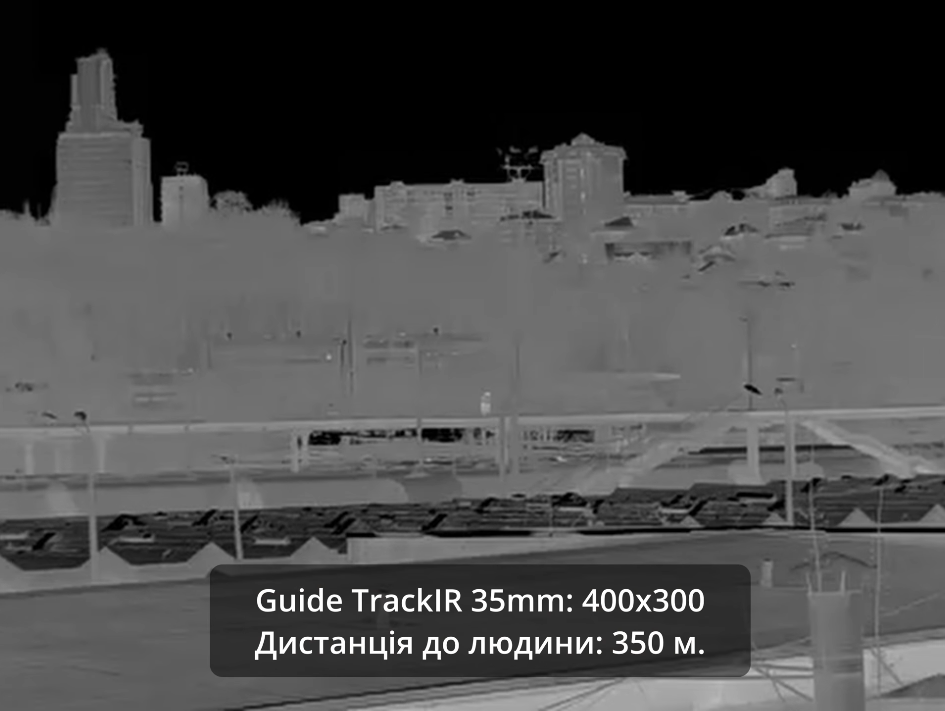

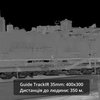
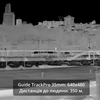
Matrix resolution 400x300 and 640x480 pixels. Illustration: IBIS
The refresh rate of the thermal imaging sensor is also a very important parameter. It starts at 9-15 Hz to 100-120 Hz (also 25-30 Hz and 50-60 Hz). We recommend focusing on 25-30 Hz or better still 50-60 Hz, because this allows you to see a clearer and smoother image.
Detection range: the more the better, but in combat it should be at least 600 meters for a monocular and 1000 meters for a binocular. Parallel to this we should also mention the field of view (FOV). This is the area of space that can be seen in the observation unit. If you need to observe at close distances, choose a wider FOV. For observation at a distance of a kilometer or more, thermal imaging cameras with a narrower angle of view are the right choice.
Let's not forget about the focal length, which has three classifications, here everyone already selects this figure for their tasks:
- Wide-angle: 6-25 mm - large field of view, reduced image scale.
- Normal: 35-50 mm - standard field of view, normal image scale.
- Telephoto lenses: 70-200 mm - narrow field of view, enlarged image scale.
You should also pay attention to the weight and duration of the camera. The lighter the thermal imaging camera, the more expensive it will be. We recommend taking thermal imaging cameras which weigh no more than 1 kg.
Battery life is also important, especially in combat situations. At a minimum, the Imager should contain a charge and operate without recharging for 5 hours. We recommend that you choose a thermal imaging camera with a battery life of 6-10 hours. The maximum value can reach 16 hours. Although experts still advise to always have a stock of batteries and rechargeable batteries, in order to continue to perform the task as long as necessary.
In general, all models have IP66 protection. This ensures complete protection against dust and light water flow, allowing for little penetration. IP64 protected models also exhist - this will keep dust and water droplets out. And Pulsar has jumped ahead and ensures IP67 level of protection for their thermal imaging cameras. It guarantees immersion in water to a depth of 1 meter for a short time without damaging the device.
Also, all thermal imaging cameras have several color palettes for surveillance. Each model has a Black Hot, White Hot and Color Mode palette. The last one differs from manufacturer to manufacturer. For example, Guide has red hot, green hot, iron red and blue heat. And Pulsar has sepia, rainbow, ultramarine and violet. These palettes allow you to optimize your device for specific tasks and respond to changing observation conditions. White Hot and Black Hot are optimal for object detection. Color Mode for recognition and identification. Usually there are six of these palettes, but the models encountered can have eight.
When it comes to the most expensive thermal imaging cameras, they usually have a number of features that other devices do not have:
- An HD display creates detailed images for clear visibility.
- A built-in Picture-in-picture feature improves accuracy by providing a 2x magnification of the reticle area at the top of the display. This helps you get closer to your targets while leaving the rest of the field of view visible.
- Capture video and photos directly to your micro SD card at 1280x960 and 60 frames per second.
- Capable of live streaming when connected to a network.
- Smart rangefinder that will show your distance to the target.
The last thing we want to mention is the sensor technology. There are only two of them: a-Si - cheaper technology, lower sensitivity and lower temperature range. And VOx - more modern and more expensive technology, higher sensitivity, greater temperature range. The VOx sensor will give a better image, especially in bad weather conditions.
Which is Better, a Monocular or a Binocular?
A monocular is more advantageous than a binocular, and there are several reasons for that.
- The first is the price. For the same price you can get 2-3 monoculars at medium price or 3-4 budget monoculars.
- The next thing is functionality. A binocular cannot offer much more than a monocular. Laser rangefinder, operation for 9 hours, Wi-Fi module: all this is also present in monoculars.
- 100% advantage of binoculars is only more comfortable observation thanks to two digital screens. For example, Guide TrackIR PRO 35mm monocular has the same resolution and refresh rate as GUIDE TN650 binocular, but costs $3000-4000 less.
Therefore, we recommend that you focus on monoculars when choosing a thermal imaging device.
